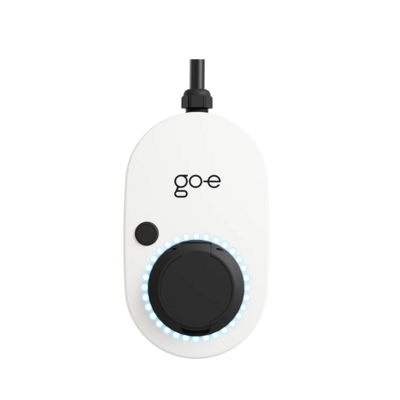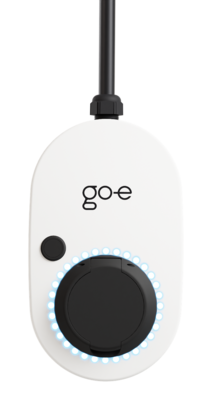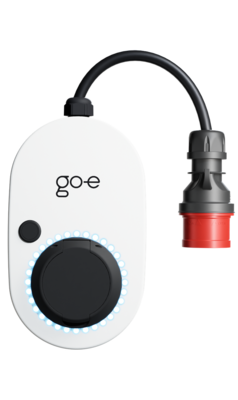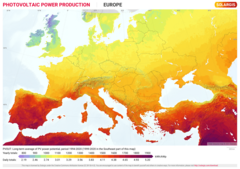EV Charging at Home with Solar Panels
Last updated:
Home solar is the cheapest way to power an electric car.
First, however, you have to make an investment that will pay off in 6-10 years. Yes, that sounds too long. But think about the fact that you won't have to pay for electricity after these years. Charging your car for free, having all the electricity in the house for free and maybe even making some extra money by selling your solar power to the grid. Goodbye bills.
Doesn’t that feel exciting?
From May to August 2022, the EU generated a record 12% of its electricity from solar power. That’s a lot!
This nice percentage has been achieved in part thanks to individuals and households installing small solar panels on the roofs of their homes. Solar energy will be getting even more popular as gas and electricity prices in Europe are literally trying to reach the sky.
EV Charging with Solar Panels
But let’s cut to the chase. Charging your electric car from a renewable source of energy will help you personally save a pretty penny.
On top of that, you will also make a positive global impact on the environment. You are saving the world while saving your money. How does that sound?
The thing is, solar panels don’t have an engine or exhaust.
No engine = no toxic emissions*.
An average EV consumes 0,2 kWh/km.
100 km - 20 kWh.
This means your personal decision to switch to photovoltaic charging will really make the difference.
Just imagine, you can run your electric car on 100% clean energy. Isn’t that awesome?
But what does it take to install solar panels? And when will you feel those mind-blowing financial benefits? We will cover these and other issues here.
* Lithium-ion batteries manufacturing is more material-intensive than producing traditional combustion engines. Despite the environmental footprint of lithium-ion batteries production, electric vehicles are still much more climate-friendly than the alternatives.
How Many Solar Panels Do You Need to Charge Your EV?
The amount of energy one solar panel can produce during the day varies a lot across European countries. Is it mostly sunny or cloudy where you live? The answer matters.
In general, two major factors play the role:
-
The solar output of the panel (Watts): You can find PV panels with an output from 250 to 450 Watts and more in online and offline shops.
-
The number of peak sun hours per day in your area: Let’s face facts, PV panels are more efficient in Spain than in Norway.
Here, for instance, you can see the average daily sun hours in different countries per year.
Source: Solargis (https://solargis.com/maps-and-gis-data/download/europe)
Keep in mind that the number of sunny hours also varies depending on the season.
How much energy does a solar panel produce per day?
Let’s assume you have a 400 Watt PV panel and live in an area with 4 sun hours in October per day:
400W (output) x 4 hours = 1,600 Watt-hours per day
This means one 400W solar panel with 4 daily sun hours can produce ≈ 1.6 kWh per one autumn day (1 kWh = 1.000 Watt).
You can do the same trick with any other panel and get a relevant number for you.
Now that you know how much energy you can get with one PV panel, check how much energy your electric car needs to charge. Remember that you don’t have to fully charge your EV from scratch. Well, at least not every time.
If your car has a 40 kWh battery (e.g. Renault Mégane E-TECH Electric EV40), and at the end of the day you want to refill it by ¼, you need about six solar panels producing 1.6 kWh per day.
10 kWh / 1.6 kWh ≈ 6 panels
If you use the panels for other appliances in the house, you need to make sure you have enough energy for everything. Unless you don’t mind having your fridge off for a few hours because your car is charging. You can do it by
- installing PV panels with higher capacity
- increasing the number of the panels.
It is advisable to use PV panels with higher efficiency as, this way, you can save space.
There are three main types of solar panels:
- monocrystalline (most efficient)
- polycrystalline (efficient)
- namorphous (least efficient)
Cost of Charging an Electric Vehicle with PV Panels
The rule of thumb is that driving an electric car is much cheaper than a gas-powered vehicle, whether with solar energy or not.
When it comes to using natural energy for charging, the main expense is buying the solar panels themselves. For instance, a 300W PV panel will cost you from EUR 150 to EUR 400. The price increases along with the capacity.
Bear in mind that to use the energy, you also need a charge controller, solar inverter, and separate battery in case you want to store your energy (and you most probably do) - the upfront costs can be relatively high. Buying all these things solely for charging your car is not a very profitable solution.
It makes more sense to get enough panels for running some other home appliances as well. For instance, a washing machine, oven, heating system, dishwasher, etc. In this case, purchasing all the additional units to use PV panels is totally reasonable.
On average, a single household consumes around 1,500 kilowatt hours per year. A family of four needs about 4,500 kWh. If you want to personalise these numbers, try to check the energy consumption of the appliances you’re constantly using at home. For instance, a modern TV needs between 50 and 60 watts per hour, while a washing machine consumes 800-1,000 watts (≈ 1kWh).
Storing electricity from solar panels
The sun isn’t there around the clock, even if you live in the very south. Therefore, storing energy for future use is a smart thing to do. Buying a battery will cost you 6,000€ or more depending on the size. In most cases, it can hold a charge for 1-2 days.
Important: A battery for storing solar energy must be purchased together with all the other elements of the PV system. All the components should match each other.
Can I get any subsidies for PV panels?
If you go solar, you can count on support in the form of federal tax credits and grants. In Austria, you receive a certain subsidy according to the peak power (measured in kWp) of your PV panels. For example, if your panels are able to produce between 100 - 1,000 kWp maximum, you can receive up to 170 euros per kWp from the government.
How much does a home EV charging station cost?
If you already have solar panels installed, you just need a home charging station to be able to charge your electric car with natural energy.
Prices for smart charging stations start at €550 (with no special features) and can reach 2000 €. But no worries, you don’t need to go bankrupt to purchase a quality unit.
Our go-e Charger Gemini flex became a price-performance winner in Auto Bild and P3 Wallbox Test in May 2023. This model costs around 700-800€, depending on the charging power.
go-e Charger Gemini 11 kW

The compact wallbox for stationary use, at home or at the workplace. Simple installation, intuitive operation and smart comfort functions. Charging power from 1.4 kW to 11 kW. 1-phase or 3-phase charging.
go-e Charger Gemini 22 kW

The compact wallbox for stationary use, at home or at the workplace. Simple installation, intuitive operation and smart comfort functions. Charging power from 1.4 kW to 22 kW. 1-phase or 3-phase charging.
go-e Charger Gemini flex 11 kW

The intelligent wallbox can be used both stationary in the wall bracket and mobile. No electrician is required for the installation of the charging station. Charging power from 1.4 kW to 11 kW. 1-phase or 3-phase charging.
go-e Charger Gemini flex 22 kW

The intelligent wallbox can be used both stationary in the wall bracket and mobile. No electrician is required for the installation of the charging station. Charging power from 1.4 kW to 22 kW. 1-phase or 3-phase charging.
More and more electric cars are entering the market. Have you seen the hilarious BMW iX commercial featuring Arnold Schwarzenegger and Salma Hayek? We bet you’ve also seen many other EV ads.
All this demonstrates that electric vehicles are here to stay. No wonder governments in different countries offer subsidies for those willing to make e-mobility a part of their lives.
Saving money plus saving the environment is a win-win situation, isn’t it?
PV Charging of Your Electric Car: How Long Does it Take?
It mainly depends on:
- charging speed of your wallbox
- electric vehicle you own.
There are also some other factors such as the capacity of your PV panels, the consumption of solar power by your household appliances, etc.
You can charge directly from solar panels only from an excess current of six amperes. This means, for one-phase charging, you need to have a photovoltaic surplus of at least 1.4 kW, three phase - 4.2 kW.
To calculate the charging speed for your electric vehicle, check out our blog article or simply use our charging speed calculator.
PV Surplus Charging
When choosing a charging station for your electric vehicle, check whether it allows the PV surplus charging. That’s exactly what our combo go-e Charger + go-e Controller can do.
If you have solar panels, it’s likely that you will have some extra energy left even after powering your household appliances. PV surplus charging means using this energy to charge your vehicle instead of throwing it into the atmosphere.
You have a smart charger and the go-e Controller? Activate its PV surplus function and the go-e Charger will use the solar energy for topping up your car battery as soon as there is any left.
Do you want to allow Integration of youtube videos?
Allows the playback of videos, that are hosted on youtube.com. By allowing this feature, you accept the privacy agreement of google.
Dynamic charging with solar energy
Imagine you’ve got a smart wallbox with dynamic load management, such as our go-e Charger with the go-e Controller.
You start charging your car as soon as you arrive home and it happily receives solar energy at a rate of 11 kW. Then you decide to start the washing machine. The charger recognises that there is now less energy available and reduces the charging speed.
With the go-e Controller's dynamic load balancing feature, you can sit back and relax without worrying about adjusting settings every time you use your dishwasher or air conditioning unit.
Summary
Driving an electric car can be impressively cheap and sustainable. A solar charging system at home allows you to drive on 100% natural energy. In case you have enough power from your solar panels for charging, surplus EV charging with PV is a great solution.
Installation of solar panels and the equipment necessary for its functioning requires a specialist. But once all is set, charging your EV with natural power is a piece of cake.


